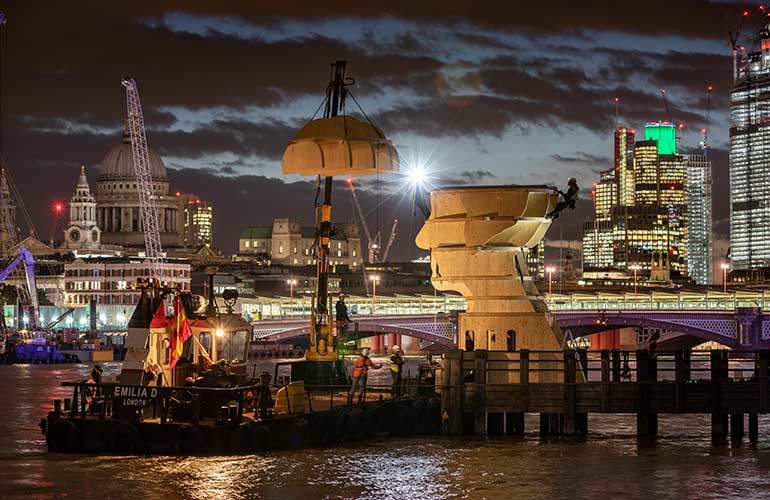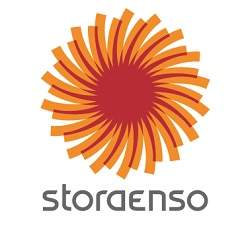
CLT by Stora Enso provided a dramatic focal point at the 2018 London Design Festival where it was used to form Steuart Padwick’s landmark sculpture ‘Head Above Water’. The award-winning British furniture designer created the 9m-high gender, ethnicity and age neutral installation in support of the Time to Change campaign to remove the stigma of mental illness.
Delivered from the River Thames by the unusual method of barge crane and installed by a team of professional riggers qualified to work at height (WAH), Head above Water made a brief, but dramatic addition to the London Skyline for the duration of the festival. The sculpture was colour-lit at night and interacted with users via social media which acted as a barometer for London’s wellbeing. It is estimated to have had more than 28,000 visitors over five days adding to the hundreds of thousands of daily visitors to the area.
15 weeks from concept to delivery
Stora Enso provided product and support services pro-bono, joining forces with more than 100 companies and individuals to deliver Head Above Water to an incredibly tight deadline of 15 weeks from concept to delivery.
The sculpture was designed in four sections, each measuring approximately 3m-5m in width, and weighing between 1.5t and 3.4t. At design stage, it was necessary to consider the complex logistics of installing CLT panels from the River Thames by barge crane, with the limitations of the crane’s load and reach capacity and its ability to only achieve the necessary height during high tide. The overall installation took just 24 build hours with the final section installed as the sun rose over the River.
Renewable and reusable
Head Above Water will be rebuilt and a planting design incorporated as a symbol of positivity and regeneration at the Northfleet transhipment facility on the central section of the Tideway project. The facility is the main Hub of the ‘More by River Scheme’ which aims to take thousands of vehicle movements off the streets of London, redirecting their movements into the site and then loading the materials onto barges utilising the river to deliver to site.

